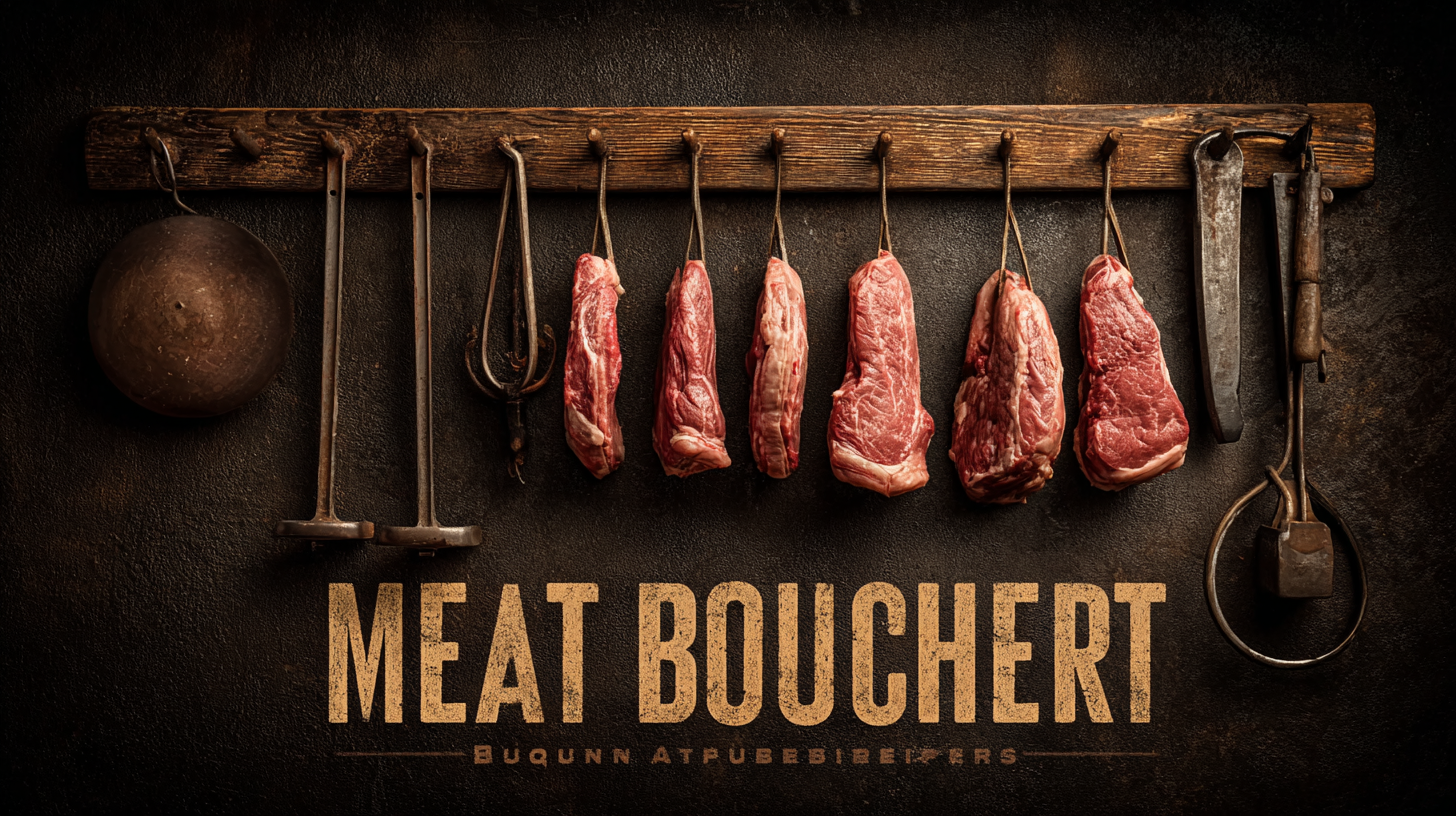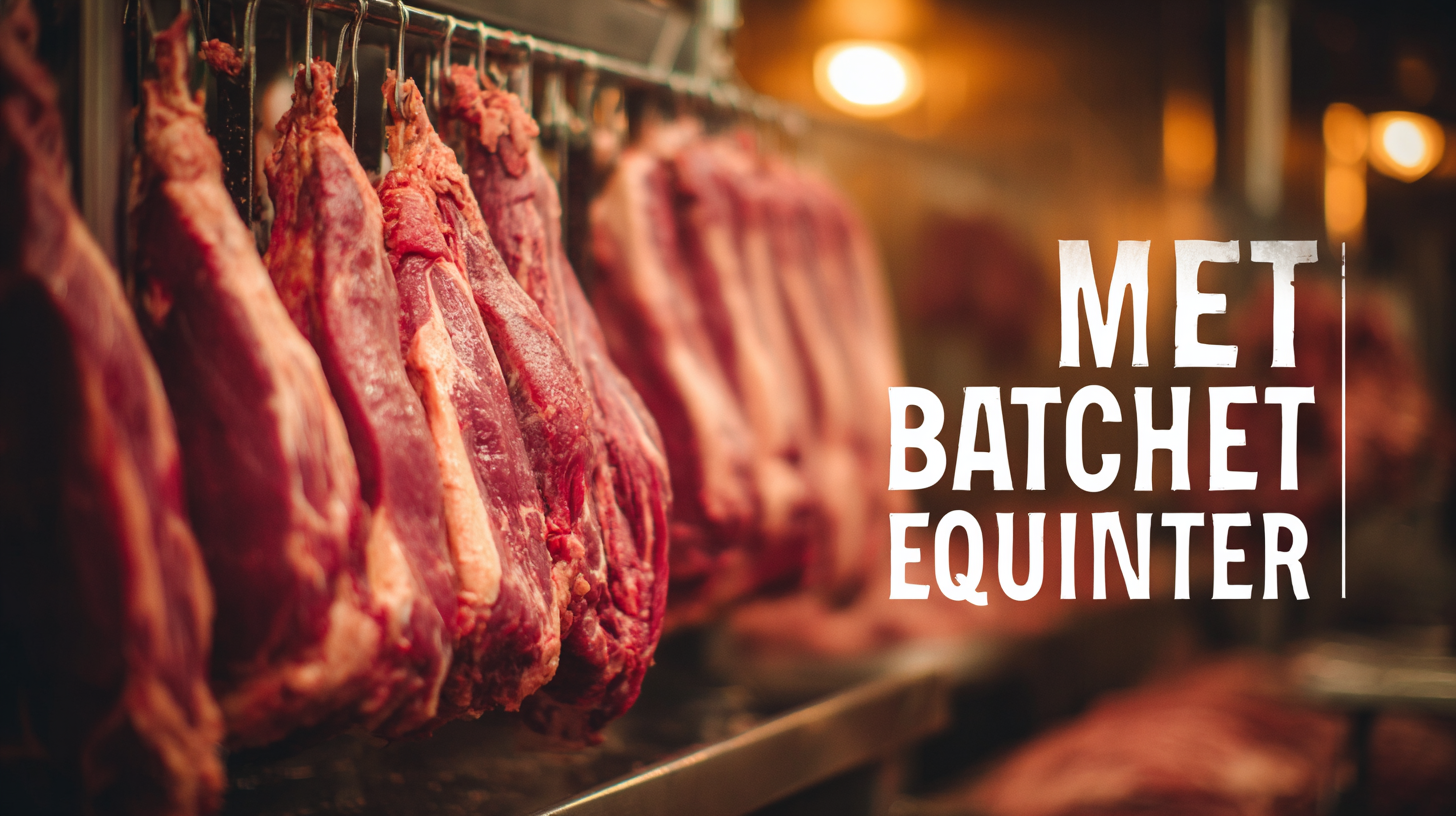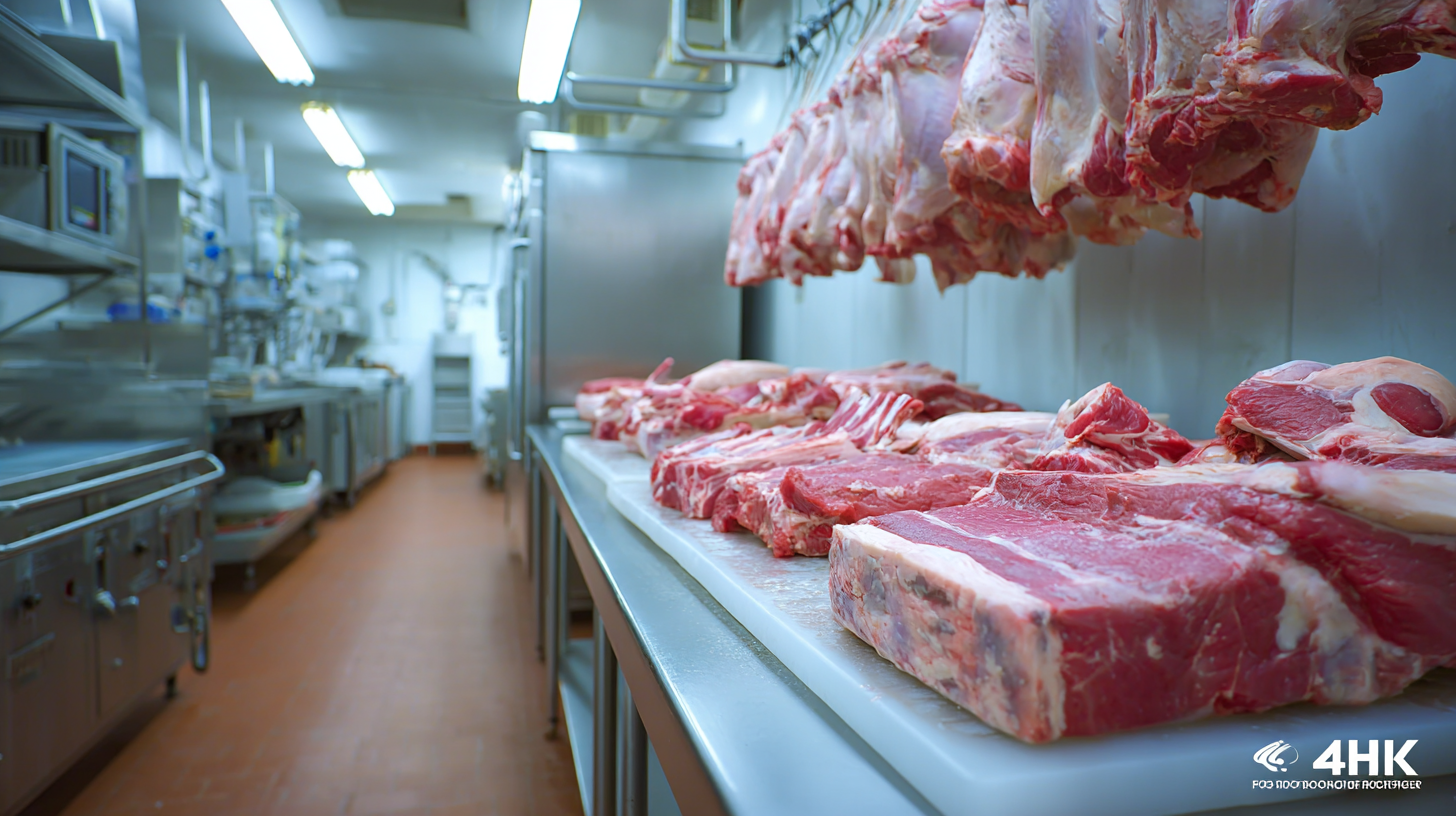How to Choose the Best Meat Butcher Equipment for Your Business Needs
When running a successful butcher business, the choice of Meat Butcher Equipment is crucial to ensure efficiency, quality, and safety in meat processing. In today's competitive market, having the right tools not only enhances productivity but also significantly impacts product quality, which is fundamental for customer satisfaction and trust.

With the rise of globally trusted Chinese manufacturing, businesses can now access high-quality, durable, and reliable equipment that meets international standards. This blog will guide you through the essential factors to consider when selecting the best Meat Butcher Equipment tailored to your specific business needs, helping you to streamline operations and elevate your products to meet the demands of discerning customers.
Understanding these elements is key to maximizing your investment and ensuring your butcher shop stands out in an ever-evolving marketplace.
Selecting Essential Meat Butcher Equipment: A Comprehensive Guide
 When it comes to selecting essential meat butcher equipment for your business, understanding your unique needs is paramount. The right tools not only improve efficiency but also enhance product quality. Start by assessing the volume of meat you handle daily to determine the scale of equipment necessary. For instance, if you're processing large quantities, consider investing in commercial-grade saws and grinders that can withstand frequent use and produce consistent results.
When it comes to selecting essential meat butcher equipment for your business, understanding your unique needs is paramount. The right tools not only improve efficiency but also enhance product quality. Start by assessing the volume of meat you handle daily to determine the scale of equipment necessary. For instance, if you're processing large quantities, consider investing in commercial-grade saws and grinders that can withstand frequent use and produce consistent results.
Tips for choosing the right equipment include prioritizing hygiene and safety features. Look for butchers' tools made from stainless steel, which is easier to clean and resistant to bacteria. Additionally, evaluate ergonomic designs that reduce strain during long hours of work; this can significantly impact your team's productivity and overall satisfaction.
Don't overlook the importance of versatility in your equipment selection. Opt for multifunctional tools that can perform various tasks, such as slicers that can also handle different types of meat. Lastly, think about future growth—investing in high-quality equipment now can save you money in the long run as your business expands.
Understanding the Different Types of Meat Butcher Equipment Available
When it comes to selecting the best meat butcher equipment for your business, understanding the various types available is crucial. Butcher equipment can range widely, from fundamental tools like knives and cleavers to more advanced machines such as meat slicers and grinders. Each piece of equipment serves a different purpose, catering to the specific needs of processing various types of meat, whether it’s beef, pork, poultry, or fish.
Investing in high-quality butcher knives, for instance, can significantly enhance your meat-cutting efficiency. Recent tests have highlighted several top-performing knives that excel in tackling diverse cuts of meat. Moreover, as the meat processing industry continues to evolve technologically, incorporating modern equipment not only improves productivity but also ensures safer handling of meat products. As the global demand for fresh processed meats rises, it’s vital to choose equipment that can keep pace with market expectations and deliver quality results consistently.

Evaluating Equipment Efficiency: Impact on Cost and Productivity
When it comes to selecting the best meat butcher equipment for your business, understanding its efficiency is crucial. Equipment efficiency directly impacts both cost and productivity, making it essential to assess your specific needs before investing. High-efficiency machines typically consume less energy and require less maintenance, leading to reduced operational costs over time. Additionally, efficient equipment can increase output, allowing your business to serve more customers without overextending resources.
Tip 1: Look for equipment that offers multi-functionality. Machines that can perform various tasks can save both time and money, as you may not need to invest in multiple pieces of equipment. This versatility can also streamline your workflow, increasing overall productivity.
Tip 2: Consider the after-sales support offered by equipment manufacturers. A provider that offers good customer service and warranties can help mitigate costs related to repairs or replacements in the long run. Enhanced support ensures that your operations remain productive, minimizing downtime and maximizing the efficiency of your butcher equipment.
Compliance with Health and Safety Regulations in Butcher Equipment
When selecting meat butcher equipment for your business, compliance with health and safety regulations should be a top priority. The equipment you choose must meet national and local standards to ensure the protection of both your employees and customers. This includes considerations such as the material used for equipment, as stainless steel is often favored for its durability and ease of cleaning. Additionally, make sure all equipment has suitable certifications that confirm it adheres to safety regulations.
Tips: Regularly train your staff on the proper use of equipment and the importance of maintaining sanitary conditions. Establish a routine cleaning schedule that adheres to health codes and inspect equipment frequently for any signs of wear or damage that could pose safety risks.
Moreover, consider the ergonomics of the equipment you purchase. Well-designed tools can minimize physical strain on workers, while ensuring efficient operations. Investing in equipment that is compliant with regulations not only helps in avoiding legal penalties but also fosters a healthier work environment, ultimately benefiting your business's reputation.
How to Choose the Best Meat Butcher Equipment for Your Business Needs - Compliance with Health and Safety Regulations in Butcher Equipment
| Equipment Type | Key Features | Health & Safety Compliance | Maintenance Requirements | Cost Estimate |
|---|---|---|---|---|
| Meat Slicer | Adjustable thickness settings, stainless steel blades | FDA-approved materials, emergency stop button | Regular blade sharpening, daily cleaning | $1,000 - $3,500 |
| Meat Grinder | Multiple grinding plates, powerful motor | NSF certified, safety interlock systems | Disassembly and sanitation after each use | $500 - $2,000 |
| Refrigeration Unit | Temperature control, energy-efficient | Complies with HACCP standards, temperature log | Monthly defrosting, regular temperature checks | $2,000 - $6,000 |
| Cutting Table | Durable surface, adjustable height | Easy to clean, non-porous materials | Daily sanitization, surface inspection | $300 - $900 |
| Vacuum Packing Machine | High-speed sealing, adjustable vacuum levels | Food-safe materials, built-in cooling system | Weekly cleaning of the sealing area | $1,200 - $3,000 |
Future Trends in Meat Butchery: Technological Advancements to Consider
As the meat butchery industry evolves, staying ahead of technological advancements is crucial for success. Future trends indicate that automation and AI are increasingly being integrated into butcher shops, streamlining operations and enhancing product quality. Implementing machinery such as portion control machines and automated packaging systems can significantly reduce labor costs while maintaining consistency in product presentation.
**Tips:** When selecting equipment, consider investing in digital scales and label printers, which not only improve accuracy but also enhance customer engagement through clear product information. Another emerging trend is the use of online platforms for order processing, which allows customers to customize their meat orders. This interactivity requires robust software solutions to manage inventory efficiently while tailoring offerings to meet consumer preferences.
In addition to improving efficiency, technological advancements also focus on sustainability. Refrigeration units with energy-saving features and processors that minimize waste contribute to greener practices. **Tips:** Look for equipment that prioritizes energy efficiency and offers waste-reducing capabilities; this not only supports environmental initiatives but can also lead to long-term cost savings for your business.









